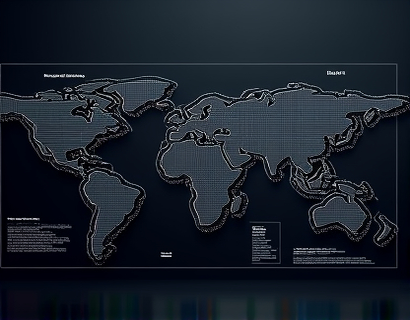Advanced Software Solutions in Graph Theory and Fluid Dynamics: Enhancing Research and Engineering
In the realm of mathematical modeling and fluid mechanics, the integration of advanced software solutions has revolutionized the way researchers and engineers approach complex problems. This article delves into the sophisticated tools and techniques that leverage advanced graph theory and fluid dynamics analysis, providing a comprehensive overview of how these technologies streamline data analysis, enhance visualization, and drive innovative discoveries. For researchers and engineers dedicated to unlocking new insights and optimizing complex systems, understanding the capabilities and applications of these cutting-edge software solutions is crucial.
Graph Theory: A Foundation for Complex System Analysis
Graph theory, a branch of mathematics that studies the properties and applications of graphs, has found extensive applications in various fields, including computer science, network analysis, and optimization. In the context of complex system analysis, graphs serve as powerful models to represent and analyze relationships and interactions between entities. Advanced software solutions in graph theory enable the manipulation and analysis of large and intricate networks, providing tools for graph construction, traversal, and optimization.
One of the primary advantages of using advanced graph theory software is the ability to handle large-scale networks efficiently. These tools employ sophisticated algorithms to perform tasks such as shortest path finding, network flow optimization, and community detection. For instance, the use of Dijkstra's algorithm or A* search algorithm in graph traversal can significantly reduce computation time and resource usage, making it feasible to analyze massive datasets.
Visualization is another critical aspect where advanced software shines. Interactive and dynamic graph visualizations allow researchers to gain intuitive insights into the structure and behavior of complex networks. Tools like Gephi and NetworkX offer robust visualization capabilities, enabling users to explore nodes, edges, and clusters in a graph, and to identify patterns and anomalies that might not be apparent through numerical data alone.
Fluid Dynamics: Simulating and Analyzing Fluid Behavior
Fluid dynamics, the study of fluids in motion, plays a pivotal role in engineering, physics, and environmental science. The simulation and analysis of fluid flow, turbulence, and heat transfer are essential for designing efficient systems in aerospace, automotive, and environmental engineering. Advanced software solutions in fluid dynamics provide researchers and engineers with the tools to model and simulate these complex phenomena with high accuracy and efficiency.
Computational Fluid Dynamics (CFD) is a key area where software solutions have made significant advancements. CFD simulations involve solving the Navier-Stokes equations, which describe the motion of fluid substances. Advanced software packages like OpenFOAM and ANSYS Fluent offer comprehensive solvers and preprocessors that can handle a wide range of fluid dynamics problems. These tools support both steady-state and transient analyses, allowing for the simulation of various flow conditions and boundary scenarios.
Mesh generation is a critical step in CFD simulations, and advanced software provides sophisticated meshing algorithms to create high-quality meshes that accurately represent the geometry of the problem domain. Adaptive mesh refinement techniques enable the software to dynamically adjust the mesh resolution based on the flow features, ensuring computational efficiency without compromising accuracy.
Integration of Graph Theory and Fluid Dynamics
The intersection of graph theory and fluid dynamics opens up new avenues for research and application. For example, graph-based methods can be used to discretize and solve partial differential equations (PDEs) that govern fluid flow. By representing the domain as a graph, where nodes correspond to grid points and edges represent connections between them, complex PDEs can be transformed into graph algorithms. This approach, known as graph-based finite element methods, offers a flexible and efficient way to solve fluid dynamics problems.
Another area of integration is in the analysis of network-based fluid systems, such as pipelines and distribution networks. Graph theory provides the framework to model these systems, while fluid dynamics simulations can be used to analyze flow rates, pressure drops, and other critical parameters. Advanced software solutions that combine these methodologies enable a holistic approach to designing and optimizing fluid transport systems.
Enhancing Data Analysis and Visualization
One of the most significant benefits of advanced software solutions in both graph theory and fluid dynamics is the enhancement of data analysis and visualization. Researchers and engineers can process and analyze vast amounts of data quickly and accurately, leading to faster insights and more informed decision-making. Advanced visualization tools provide a means to explore and communicate complex data in an intuitive and accessible manner.
For graph theory, visualization tools can highlight key features such as central nodes, bottlenecks, and community structures. In fluid dynamics, visualization can reveal flow patterns, vortices, and pressure distributions. Interactive visualizations, such as 3D renderings and animations, allow users to manipulate and explore the data from different perspectives, facilitating a deeper understanding of the underlying phenomena.
Data integration is another area where advanced software excels. By combining data from multiple sources and formats, researchers can perform comprehensive analyses that consider various factors and constraints. For instance, integrating graph data with fluid dynamics simulations can help in studying the impact of network topology on fluid flow, providing valuable insights for system optimization.
Driving Innovative Discoveries and Performance Optimization
The application of advanced software solutions in graph theory and fluid dynamics has led to numerous innovative discoveries and performance optimizations. In mathematical modeling, these tools enable the exploration of complex systems that were previously intractable due to computational limitations. For example, researchers can now simulate large-scale biological networks or urban transportation systems with unprecedented detail and accuracy.
In engineering, the optimization of fluid systems has resulted in more efficient designs and reduced resource consumption. For instance, in the aerospace industry, CFD simulations aided by graph-based methods have led to the development of lighter and more aerodynamic aircraft. In the energy sector, optimized pipeline networks designed using graph theory and fluid dynamics simulations have improved the efficiency of oil and gas transportation.
Moreover, the use of machine learning and artificial intelligence in conjunction with these software solutions is opening new frontiers. Predictive modeling and automated optimization algorithms can identify optimal configurations and parameters, further enhancing the performance of complex systems. This synergy between advanced computational methods and data-driven approaches is driving significant advancements in various fields.
Conclusion
Advanced software solutions in graph theory and fluid dynamics are transforming the way researchers and engineers tackle complex problems. By providing powerful tools for data analysis, visualization, and simulation, these technologies are unlocking new insights and optimizing performance in mathematical modeling and fluid mechanics. For those in these fields, embracing these cutting-edge tools is essential for staying at the forefront of innovation and discovery.










































